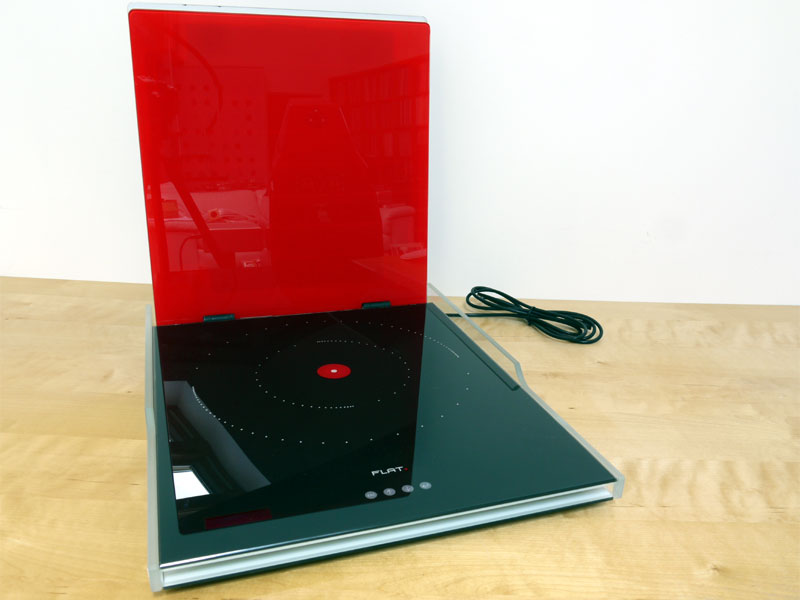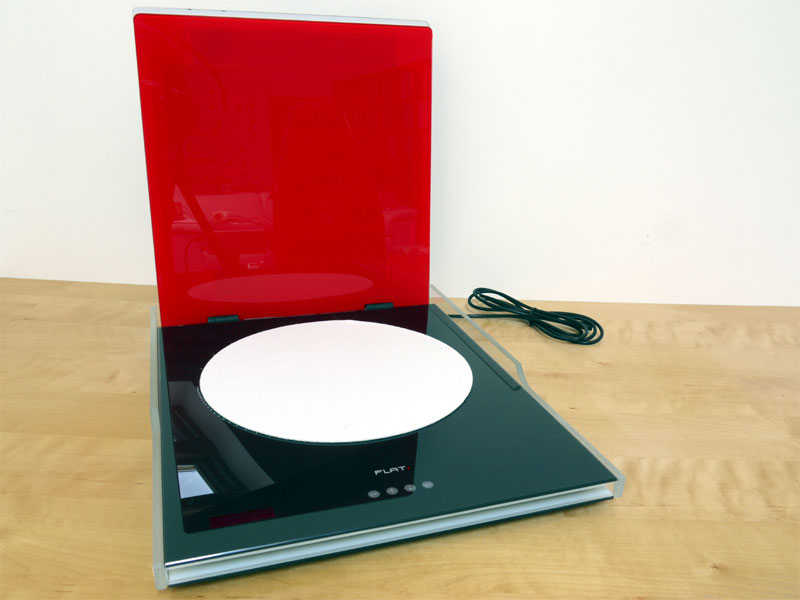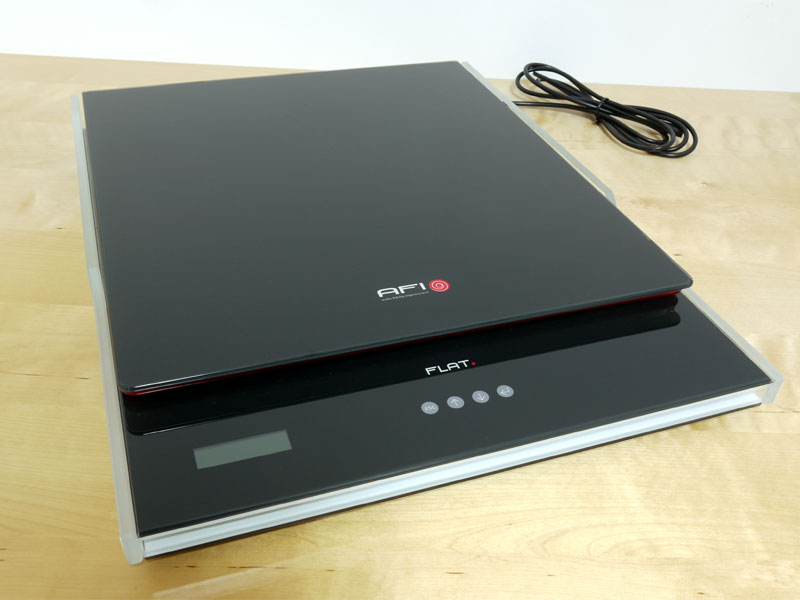Audio Fidelity Improved Flat: A Record Flattener With All of the Answers?
But it wasn’t always this way. Back in the dark days of the late-‘70s and early-‘80s oil crisis, records were getting more expensive and way, way thinner as the cost of the raw material spiraled out of control and margins plummeted. Pick up records from that era these days and it’s shocking just how insubstantial they are in comparison to the slabs we’ve all gotten used to. Flexidisc doesn’t begin to describe the effect because it only covers how thin the discs are. What it doesn’t reflect is the inconsistency in pressing and cutting quality, the number of discs that are drilled off center or wickedly warped, or the sheer variety of warps that exist, from dishing of the disc as a whole, to taco bows and worst of all rim warps -- a category that covers everything from a gentle wave in the outer circumference to short, sharp, vinyl scarp slopes that launch the stylus airborne as it crests their summit. Back then buying records was a lottery and returning them with faults a fact of life. Of course, many of those discs still found their way onto the market, adding to the "installed base" of vinyl software that current users get to pick over once they venture into the secondhand market. Throw in the ability to warp perfectly flat records through careless handling, leaving them in direct sunlight or inside cars, as well as the incidence of manufacturing faults amongst current releases, and serious collectors can’t afford to be complacent about the flatness of their records. A number of my recent mainstream purchases have exhibited subtle dishing, demonstrating that the issue of pressing quality might have diminished, but it hasn’t gone away.
A number of companies have offered record flatteners over the years, generally a variation on the theme of two sheets of glass that sandwich the offending disc before gently heating it (or being heated) to "reform" the vinyl. These range in price from a couple of hundred bucks to the couple of thousand asked for the Orb and Furutech self-contained, high-tech models. Well, now there’s a new entry to this rarified market, the Audio Fidelity Improved (AFI) Flat, a slim device that does rather more than it says on the tin. Like those other devices mentioned above, it essentially consists of a hinged press that heats the record, but it differs in detail and it definitely differs in appearance. Built in Germany, the AFI Flat is neat and beautifully styled, with shiny surfaces that look great and are easy to clean. It has a simple LCD display and four flush buttons to control operation.
Open the glossy black lid and the underside is shocking scarlet, a red-and-white-dot pattern on the base indicating the position of the disc to be dealt with. Which brings us to the first big operational difference. The Flat sandwiches the disc between two thick white felt pads. These serve two purposes: self-adapting for different disc thicknesses, but also meaning that the record isn’t compressed between hard glass surfaces that risk embedding any surface detritus. Even so, AFI instructs users to clean discs thoroughly before use, which is sensible and practical advice. After all, who’s going to buy a record flattener before they’ve bought a record cleaner? I duly assembled a selection of discs, some from the nether regions of my collection and others more recent acquisitions with generally less severe deformities. I then cleaned them on the VPI Typhoon (more representative of most people’s record cleaners than the Kuzma Ultrasonic record cleaner) and set about feeding them through the Flat. The process is simplicity itself, once you’ve established the control logic: power up the machine, enter the control sequence, select the program and set it running. The controls are actually magnetically actuated (AFI supply a metal-capped pencil, but alternative devices work), ensuring that there are no moving parts or surface films to fail over time. A range of records quickly established the system’s efficiency with both dished discs and bent surfaces, so it was time to try something a little more severe. I chose a copy of Carmel’s debut EP [Red Flame Productions RFM 9] bought in 1982. It was rendered unplayable by a rim warp so vicious and narrow that it causes the stylus not just to take flight but land several grooves further in. But I couldn’t bring myself to part with it simply because I love the textured cover, and aside from track one on side one, the rest of the record is perfectly fine. How rim warps can be catastrophic on one side of a disc and trackable on the other is one of life’s great mysteries, but that was the case here, perhaps reflecting more of a fold in the pressed surface than the conventional notion of a progressive wave. Subjecting the disc to the Flat treatment, I waited for the results with bated breath -- only to be disappointed: better but still not playable. So I decided to flip the disc and repeat the process, and that cured the problem. Observe the stylus tracking the grooves and you can still see it wobble slightly as it hits the point where the warp used to propel it into the air, but now it sails through without physical or sonic impact. This was the only disc I could find that required a second treatment, despite my best efforts and most dubious records. Furutech users report that second and even third treatments are not that uncommon -- and occasionally still come up short of fixing problem discs. Of course, I have limited experience with the Flat, but initial impressions are that it works at least as well as the benchmark device. Which brings me to the extra functionality on offer. You’ll notice that I referred to selecting the operating program. The Flat offers three different programs: the Standard program, which is designed to flatten warped discs; the Relax program, which heats any disc to a lower maximum temperature and then slowly cools it to remove mechanical stresses from the pressing; and the Expert program, which allows user control over a range of operating parameters -- set out in detail in the full manual (as opposed to the Quick Start instructions I have), sadly a publication still awaiting translation from the German. I will report on the Expert option in due course, once I get to read the book, but what intrigued me more was the Relax setting. Even the most careless collector will have a limited number of warped records, but what if the Flat can improve the sound of all discs, including those that are already flat? Suddenly it becomes a far more serious proposition. There's only one way to find out, so I grabbed two brand-new pressings of a top-notch 180-gram disc, Intervention Record’s Joe Jackson: I’m the Man [IR-004]. I kept one virgin and Relaxed the other. Let’s make no bones about it -- this is a great-sounding record, a really vibrant recording with real presence and energy, and it's superbly cut and pressed by Kevin Gray and RTI, respectively. I wanted to hear just how much (if any) difference the Flat could make to what was already a great pressing. The answer is "quite a bit." Running the record through the Flat’s Relax program removed a layer of grain and lumpiness. On "It’s Different for Girls," the opening guitar was more delicate and textured, the bass had more shape and a propulsive quality, making the standard, un-Relaxed pressing sound somewhat clumsy and thick in comparison. Jackson’s distinctive voice was more natural and instrumental separation and layering were much clearer and less congested, especially through the chorus. The result was more engaging, with an easier sense of flow, an unforced quality to the playing and a much more infectious, sing-along quality, all good stuff. Having conducted the controlled test, I couldn’t wait to hear the Flat's effect on other albums and genres, and whilst I can’t provide side-by-side comparisons of the type laid out above, there’s no missing the sweetness, sense of overall musical flow and clarity that Relaxing records brings to proceedings. As obvious as it was on the Jackson LP, it’s even more apparent on jazz and classical discs, with more natural tonality and acoustic perspectives.
Right now, the investigation continues, and I’ll report further after long-term use and exploration of the Expert program. But initial results are extremely promising and to date I’ve detected no problems or downsides. I’m perfectly happy to entrust any of my records to the Flat, and that’s a serious vote of confidence. Devices like the AFI Flat are far from cheap, this one costing around €2000 plus sales tax (€2490 on the German market), which seems like a lot to save a few warped records. What makes the Flat so interesting is that its use extends beyond the treatment of warps and into the realm of record conditioning. Its automated operation means that you really can just leave it running while you do other things (like listen or sleep) and right now, given the rising price of record-cleaning machines, far from an extravagance, the Flat is starting to look like the next logical step in your serious record-care program. The unit I have here is one of a first run of ten production samples, but even so the fit, finish and operation are exemplary, while the appearance is a world away from the lab-gear looks of the alternatives. The AFI Flat is a consideration for serious record
collectors and those who are simply serious about the sound of their records. The company
will be at the High End show in Munich. |



